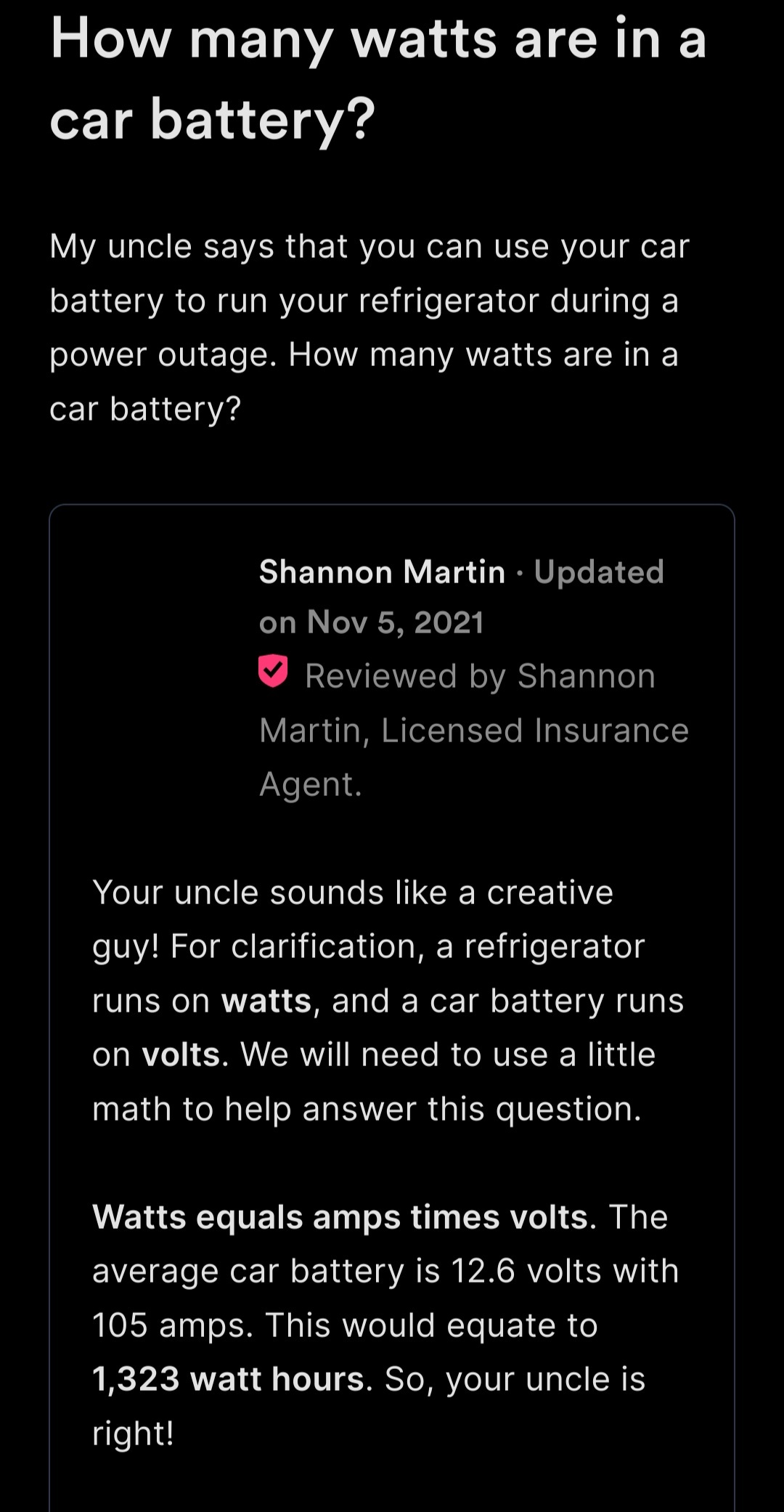this post was submitted on 18 Mar 2024
799 points (96.1% liked)
Technology
63663 readers
5532 users here now
This is a most excellent place for technology news and articles.
Our Rules
- Follow the lemmy.world rules.
- Only tech related content.
- Be excellent to each other!
- Mod approved content bots can post up to 10 articles per day.
- Threads asking for personal tech support may be deleted.
- Politics threads may be removed.
- No memes allowed as posts, OK to post as comments.
- Only approved bots from the list below, to ask if your bot can be added please contact us.
- Check for duplicates before posting, duplicates may be removed
- Accounts 7 days and younger will have their posts automatically removed.
Approved Bots
founded 2 years ago
MODERATORS
you are viewing a single comment's thread
view the rest of the comments
view the rest of the comments

From the owners manual: "There is a 115 Volt, 150 Watt inverter outlet located on the back of the center console to convert DC current to AC current. This outlet can power cellular phones, electronics and other low power devices requiring power up to 150 Watts."
I don't know if I'd plug in a fridge to that. I was wondering because my father in law's truck has a similar outlet and I know he's blown a fuse using it to power power tools.
After the freeze in Texas a couple years ago, when many people lost electricity, Ford started advertising the outlets on their trucks.
Edit to add the link - https://www.ford.com/trucks/f150/f150-lightning/features/intelligent-backup-power/
My father in law drives a 2015 F150. That outlet on the center console is 120 Volt outlet supplies 400watts. But a fridge can be anything from 300 to almost 800. I'm not saying it's impossible. And with newer trucks (especially the lightning and the F150 hybrid), I would believe it more readily. Ford is quick to market this in new trucks but I wouldn't count on it with older trucks. I'm just pointing out that real work experience says your mileage may vary. Especially in places like Texas or Arizona where your battery is going through extreme heat cycles due to the weather from like February to November.
I measured my fridge. You could, in theory. Problem is that the motor in the fridge (and in power tools) is an "induction load", meaning it draws a lot more power in a split second when starting. Inverters have to be built with that in mind, or just stronger (killowats range).
I wanted to say "look at the label but it should be fine" but then I did a quick google double-check and depending on whether you get US or EU results you get quite different answers: US 350 to 780W, EU 100 to 300W. Refrigerators have quite lower numbers but we wanted a fridge so let's look at small refrigerators with proper fridge compartment (four stars, -18C), like... a Beko TSE1284N b100, 240 bucks not fancy not shoddy (Beko in a nutshell, honestly). Damn, why are they only listing kWh/24h and kWh/a. Whelp. No pictures of rating plates anywhere. Oh. According to Amazon "50W", according to another trader 90W connected load, which makes sense if we understand those 50W as consumption load (or whatever those things are called in English).
So, yeah, look at the label and you should be fine. Don't get that fridge though it's 220V.